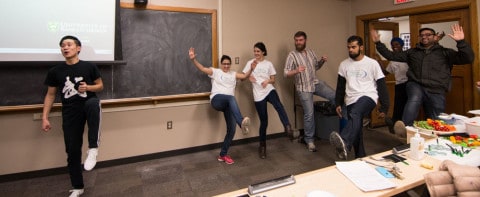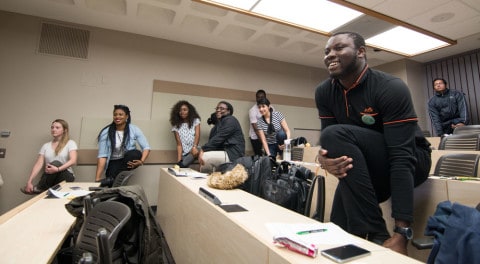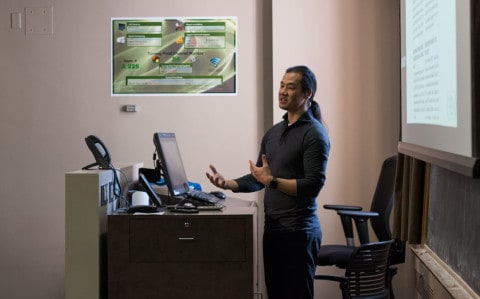When a doctor prescribes a treatment for a patient, it doesn’t usually come in the form of a weekly exercise routine. One campus group is hoping to change the way we think about physical activity and overall wellness.
Exercise is Medicine is a global health initiative that aims to make physical fitness into a key component within conventional medical systems. Originally founded in co-operation between the American Medical Association and the American College of Sports Medicine in 2007, Exercise as Medicine has since grown into a worldwide network.
co-operation between the American Medical Association and the American College of Sports Medicine in 2007, Exercise as Medicine has since grown into a worldwide network.
The organization finds its presence at the University of Saskatchewan through the School of Public Health. It is public health graduate students such as Ahmad Mobin who are responsible for the operation of Exercise is Medicine at the U of S.
“This is a new initiative we started two years ago. Rita from Student Health Services brought it as an idea for our health promotion class and ever since then, it’s evolved,” Mobin said. “We’re holding seminars, we’re holding Zumba classes [and] we’re holding tai chi lessons. Our aim is to have a new health initiative that can make an impact on a wider scale.”
The group’s latest event was a seminar presented on Mar. 11, featuring information for healthcare providers on how they can better incorporate Exercise is Medicine into their practices and studies.
 The seminar opened with a demonstration of tai chi, a traditional Chinese martial art that focuses on overall health and lifelong wellness — so much so that it is incorporated into the public health programs in several Asian countries.
The seminar opened with a demonstration of tai chi, a traditional Chinese martial art that focuses on overall health and lifelong wellness — so much so that it is incorporated into the public health programs in several Asian countries.
Members of the audience were even invited to participate in the demonstration, although to varying levels of success.
This portion of the presentation was followed by a talk from keynote speaker Dr. Patrick Ling. Ling is medical doctor who specializes in exercise medicine. As a former general physician, his perspective on health care has radically shifted in his time as a medical professional.
“I spent a number of years in emergency medicine, which is focused mostly on disease care and I really had to take another fresh look at what is my philosophy of health, and is it treating the people that have gotten sick and have many, many missed opportunities for preventative care, and as a result I had to relook at what medicine [was] for me,” Ling said.
Recalling his own family’s active lifestyle and healthy habits, Ling began searching to find ways to bridge the gap between exercise and more standard medical treatments — including at the U of S.
Ling formerly worked with the U of S Student Health Centre. During his time there, he pioneered the implementation of exercise prescriptions for students. Doctors at Student Health are now able to recommend exercise regimens for their patients, who then work with trainers at the Physical Activity Complex on campus.
of exercise prescriptions for students. Doctors at Student Health are now able to recommend exercise regimens for their patients, who then work with trainers at the Physical Activity Complex on campus.
“One thing that I recognize with this program is that we have all of the right pieces. We have the right people, we have the right people on the medical side who were receptive, and of course you have lots of people that are interested and who are willing and you have the right exercise professionals in kinesiology who are willing to be part of the team,” Ling said.
Among the numerous benefits of physical activity, Ling mentioned its profound effects as a treatment for mental disorders such as depression and anxiety, as well as its role in preventing weight and mobility-based chronic illnesses like heart disease and arthritis.
Ling believes that awareness is one of the key steps to implementing the principles of Exercise is Medicine within the mainstream healthcare system.
“I think we need to start with education and awareness, which is what this program is for: to not only make people aware of the benefits of exercise — because that’s been done already — but also tell people that there are tools that providers, healthcare providers can use,” Ling said. “As I mentioned in the presentation, there’s a significant benefit for overall health. It’s not a medication — it’s something that we all know, but we have to learn the tools and what can happen at that level.”